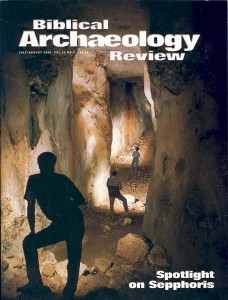We Need More Data
We have no idea what percentage of Sepphoris’s population was Jewish during the first century C.E. As a religious Jew, I would be very happy to find that the city’s ancient Jewish inhabitants kept the kosher laws (dietary regulations) and the purity laws, including immersion in a mikveh. But because of the lack of convincing data, I am skeptical of the second point.
One should distinguish between eating kosher food, on the one hand, and laws of purity, on the other: While the first is the concern of every observant Jew, the second is related mainly to the Temple. In a city like Sepphoris, perhaps only priests who ate terumah (food donated to priests) practiced daily immersion.
Identifying every small stepped pool as a mikveh is baseless and probably incorrect. An important methodological question relevant to this debate is whether we can use rabbinic sources, particularly the Mishnah (edited in 200 C.E.), in order to understand first-century C.E. facilities. Even without solving this problem, I would like to argue that determining whether the stepped pools found at Sepphoris were mikva’ot or not should be based not only on halakhic (Jewish law) issues but also on common sense.
It is clear that when those pools were full of rainwater, from the halakhic point of view they could be used as mikva’ot. But these pools would get filthy very quickly, and if we assume that the Mishnah reflects the regulations practiced during the late Second Temple period, changing the water was prohibited. Therefore it is important to note that the pools found in Judea are much larger than those found at Sepphoris; the water in these larger mikva’ot would stay clean after the dirt had sunk to the floor.
Already a library member? Log in here.
Institution user? Log in with your IP address.

